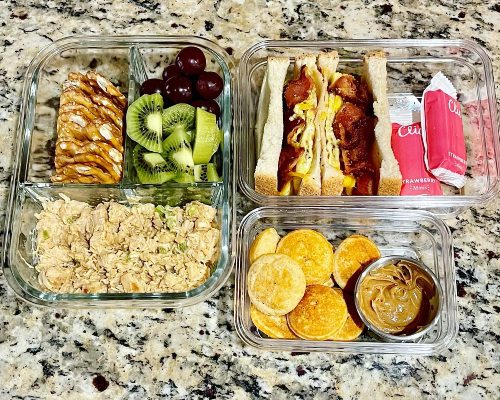Steering through the financial maze of family life can be quite a challenge, particularly when it comes down to the vital task of providing nourishment for your family. Many households around the world ponder the question, “How much should a family of four budget for food?” It’s a delicate balance, isn’t it?
On one hand, you want to meet everyone’s nutritional needs, while on the other, you need to be mindful of your expenses. Some families manage to thrive on a thrifty budget of $970 a month, while others that have high budgets allocate as much as $2000. Yet, there are those who have mastered the art of frugality, feeding a family of four on a mere $890 a month or less than that.
The secret? Strategic planning, smart shopping, and a keen eye for value. Let’s explore some effective strategies and valuable tips to help you create a food budget that perfectly fits your family’s unique needs and lifestyle.
Factors Influencing Your Family’s Food Budget
Orchestrating a family’s food budget can be a multifaceted task, swayed by numerous factors. Here’s a brief overview:
1. Family Size and Age
The number and age of family members significantly impact your food budget. Larger families and those with teenagers typically have higher food costs.
2. Dietary Preferences and Restrictions
Special diets or food allergies can increase your food budget due to the higher cost of specialized food items.
3. Meal Planning and Cooking Habits

Families that cook at home more often usually have a lower food budget compared to those who frequently dine out or order takeout.
4. Quality of Ingredients
Choosing organic or locally sourced products can increase your food budget due to their higher cost compared to conventional items.
5. Location
Living in areas with a high cost of living can inflate your food budget due to higher food prices.
6. Shopping Habits
Shopping at high-end supermarkets or buying items as needed instead of in bulk can increase your food budget.
7. Seasonality of Produce
Buying out-of-season produce can raise your food budget due to the higher cost of these items.
8. Waste Management
Poor waste management can inflate your food budget. Reducing food waste by planning meals and using leftovers wisely can help save money.
Tip: Track your food spending for a few months to identify areas where you can cut back.
Average Monthly Grocery Costs for a Family of 4

Based on data from the U.S. Department of Agriculture, in 2022, Americans allocated an average of 11.3 percent of their personal income toward food expenses. The average monthly grocery cost for a family of 4 can vary greatly depending on factors. However, the average monthly cost for a family of 4 ranges from $970 on a thrifty plan to approximately $2000 on a liberal plan.
Here’s a breakdown of the average costs:
Thrifty Plan – This is the most economical plan, costing about $970 per month. It involves careful shopping and limited spending on luxury food items.
Low-Cost Plan – This plan costs around $1050 per month. It allows for a bit more flexibility in food choices compared to the thrifty plan.
Moderate-Cost Plan: This plan offers a wider variety of food choices, costing about $1350 per month.
Liberal Plan – This is the most expensive plan, costing up to $2000 per month. It allows for plenty of flexibility and the inclusion of more expensive food items.
Strategies to Optimize Your Food Budget
1. Meal Planning
Planning meals in advance is a budget-friendly strategy. It allows you to create a precise shopping list, reducing the chance of impulse buys or waste. Additionally, you can plan meals around sales or seasonal produce, further optimizing your budget.
2. Bulk Buying

One smart approach to saving money is by purchasing groceries in bulk. Unit prices are typically lower for larger quantities. Buying in bulk can be especially beneficial for products like grains, canned goods, and meat that doesn’t spoil quickly or foods that can be stored in the freezer for later use.
3. Utilizing Coupons and Discounts
Coupons and discounts are powerful tools for reducing your food budget. You can locate these in newspapers, on the internet, or directly in the store. Some popular coupon apps include “Honey,” “RetailMeNot,” and “Ibotta.” Remember to use them wisely – only for items you need or regularly use. Combining coupons with sales can lead to even greater savings.
4. Eating Out vs. Home Cooked
While eating out offers convenience, it’s often more expensive than cooking at home. As per the USDA, in 2021, 33.6 cents of every dollar spent on food was allocated to dining at restaurants and other eateries.
Home-cooked meals allow you to control the cost, ingredients, and portion sizes. If you reduce the frequency of dining out, you’ll find a significant reduction in your food expenses.
Creative Ways to Stretch Your Food Budget
1. Gardening

A delightful and cost-effective way to stretch your food budget is by growing your own vegetables and herbs. It not only supplies fresh, organic produce right at your doorstep but also lessens the amount you shell out on store-bought produce. Plus, gardening can be a gratifying and calming pastime.
2. Community Supported Agriculture (CSA)
Joining a CSA program is another creative way to optimize your food budget. By paying a subscription fee to a local farm, you receive a box of seasonal produce regularly. It’s often more affordable than purchasing the same items from a grocery store, and you reap the added advantage of backing local farmers and savoring fresh, locally-sourced food.
3. Potluck Dinners
Consider hosting potluck dinners, where everyone brings a dish to share. It allows you to enjoy a variety of dishes without bearing the entire cost. Hosting gatherings and sharing meals with loved ones becomes more enjoyable when you have an abundance of delicious food to offer.
Wrap Up!
The food budget for a family of four is a multifaceted issue, influenced by a myriad of factors such as family size, dietary preferences, location, and shopping habits. While the average monthly cost ranges from $970 to $2000, the key to optimizing your food budget lies in strategic planning, smart shopping, and creative solutions like gardening or joining a CSA program.
However, the ultimate objective of budgeting isn’t just about saving money, but to ensure that your family enjoys a diverse, nutritious diet that caters to their needs and preferences. Always keep in mind that a thoughtfully planned food budget lays the foundation for a healthier and happier family life.
I’m Grayson Watson, your frugal companion and the brain behind this money-saving extravaganza. Strap yourself in, because we’re about to embark on a wallet-friendly adventure like no other. Learn More!

